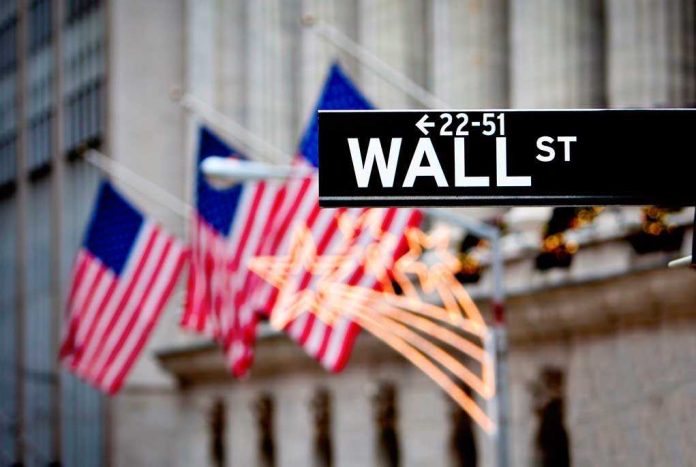
Wall Street’s euphoric response to inflation figures has ignited a fierce political debate over economic progress and partisan roadblocks.
Story Snapshot
- Inflation rates came in at 3%, beating Wall Street’s forecast.
- Major stock indexes surged, reaching toward record highs.
- The White House credits Trump’s economic policies for the positive news.
- Democrats are accused of actions that could impede progress.
Wall Street’s Reaction to Inflation
September’s inflation report revealed a 3% annual price increase, a notch below the anticipated 3.1%, sparking a rally in the stock market. The S&P 500, Dow Jones Industrial, and Nasdaq futures soared in pre-market trading, drawing attention to the robust economic landscape. Wall Street’s exuberance reflects a broader confidence in the economy’s resilience, bolstered by the belief that inflation is being managed effectively without derailing growth.
The financial sector, in particular, stands to benefit from this optimism. With inflation under control, the Federal Reserve may feel less pressure to hike interest rates further, potentially leading to more favorable borrowing conditions for businesses and consumers alike. This dynamic hints at a continued upswing in market activity and an environment conducive to investment and expansion.
White House’s Economic Narrative
The White House attributes the positive economic indicators to President Trump’s policies, which they argue have spurred growth and stability. Officials, including Press Secretary Karoline Leavitt, have been vocal in asserting that this success could be jeopardized by Democratic initiatives, like the so-called “Schumer Shutdown.” This political posturing underscores the administration’s strategy to maintain a narrative of economic competence while deflecting blame for potential setbacks onto the opposition.
By aligning economic achievements with Trump’s agenda, the administration seeks to reinforce the perception of effective leadership in economic matters. This plays into a broader strategy to consolidate political support by showcasing tangible improvements in Americans’ financial lives, from lower inflation rates to a booming stock market.
Political Tensions and Their Implications
The clash between the White House and Democrats highlights deep-seated political tensions that could shape the economic landscape moving forward. The White House’s critique of Democratic actions reflects a broader narrative of obstructionism, suggesting that partisan divisions could hinder future progress. This tension is emblematic of the larger struggle over economic policy direction, with each side vying for control of the narrative.
Democrats, meanwhile, are positioned as potential disruptors of economic momentum, a portrayal that may influence public perception and political alliances. The stakes are high, as sustained economic growth could bolster political capital for the administration, while any perceived missteps by the opposition could be leveraged to further entrench Republican influence.
Long-term Economic Outlook
In the long term, the interplay between inflation trends and political dynamics will be crucial. While the current economic indicators are promising, the specter of persistent inflation remains. Experts like Larry Summers caution against complacency, warning that inflationary pressures could resurface, necessitating careful monetary policy management. These insights underscore the need for vigilance in navigating economic uncertainties.
Sustained economic growth could enhance the U.S.’s global economic standing, providing a platform for increased political stability and influence. However, this outcome hinges on the continued alignment of fiscal policies with market realities, as well as a political landscape conducive to collaborative problem-solving. As the narrative of “America Is Back” unfolds, the challenge will be to maintain this momentum amidst the complexities of domestic and international economic landscapes.









